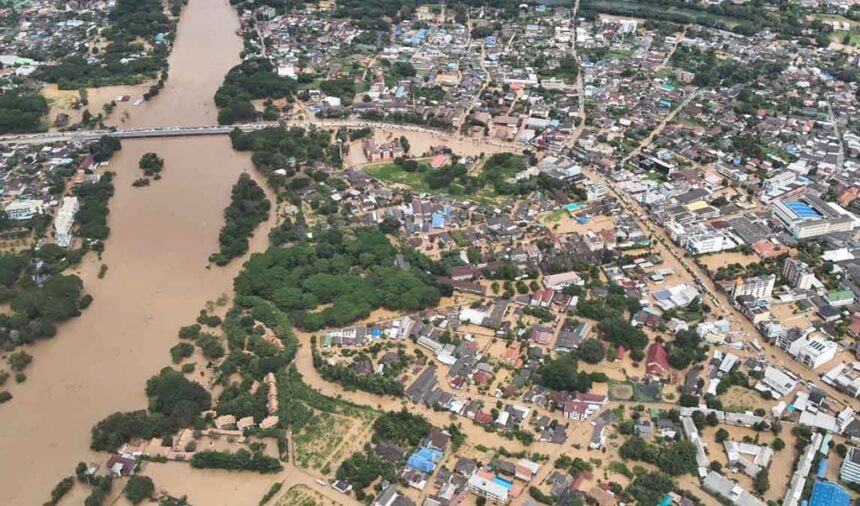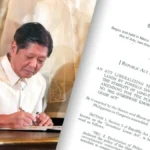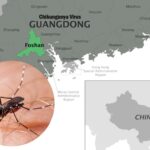CHIANG RAI – Heavy rains last September severely flooded Chiang Rai’s Mae Sai district, and the floods returned this year when the Sai River burst its banks with just minor amounts of rain. The flooding has raised concerns that the problem will only get worse.
Last year alone, Mae Sai’s floods caused millions in damages, and now many experts are warning that this might signal a pattern of yearly destruction triggered by severe weather and strip mining in Myanmar at the headwaters of the Sai and Kok Rivers.
Mae Sai is a border town next to Myanmar’s Tachileik, about 900 kilometres north of Bangkok. In May, floods hit the town twice in one month as the Sai River surged through. Mining and large-scale farming in Myanmar, blamed for widespread deforestation, have made the flooding worse.
Wannasin Keerakad, municipal clerk of Mae Sai subdistrict, told the Bangkok Post he remembers when flooding wasn’t a major problem. Since then, the town has spread closer to the river, and the loss of forests means less protection from heavy water flow.
Mae Sai’s official population is about 20,000, but locals believe the true number is much higher, with many residents unregistered. Unauthorized buildings along the river have narrowed the natural channel, making overflows more common.
Wannasin points out the mud that arrives with the floods, much of it washing down from Myanmar. He warns that the problem will grow if mining continues. The current scale of flooding is too much for local authorities. He says Mae Sai needs urgent government support.
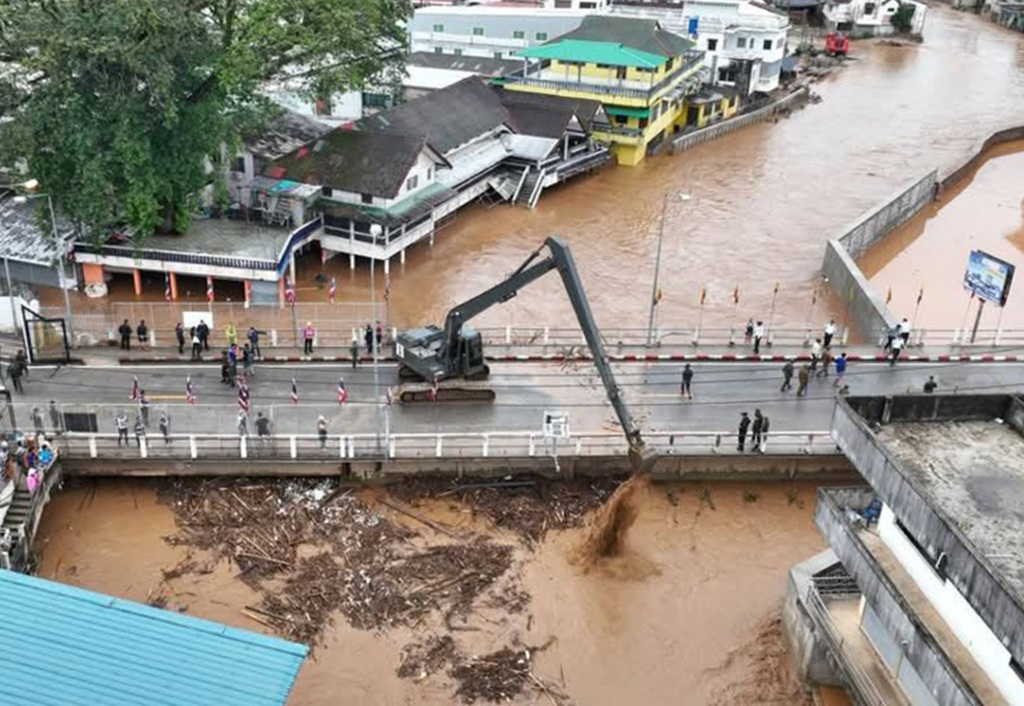
In the past, heavy flooding meant rainfall over 100 millimetres. These days, even 60 millimetres can swamp the town. Silt buildup has made the river more shallow, reducing its ability to handle stormwater. Wannasin says a permanent 3.6-kilometre floodwall is needed, along with better river flow management.
Residents living in houses along the river have agreed to leave, but they need help relocating. Mae Sai is a key border crossing with Tachileik just across the bridge. Last September, both towns suffered heavy floods and thick mud, and it took two months to clean up Mae Sai.
The two towns planned a 40-metre buffer zone to widen the riverbank, and illegal buildings were marked for removal. So far, this work hasn’t started.
The government has spent almost 75 million baht to dredge the Sai and Ruak Rivers along 31 kilometres, hoping to improve water flow during the rains. The project should finish next month, according to the Office of the National Water Resources.
Anek Siripanichgorn from the Council of Engineers Thailand says Mae Sai needs special planning because of its flood risk. He recommends creating water retention areas and pathways to direct water away from the city.
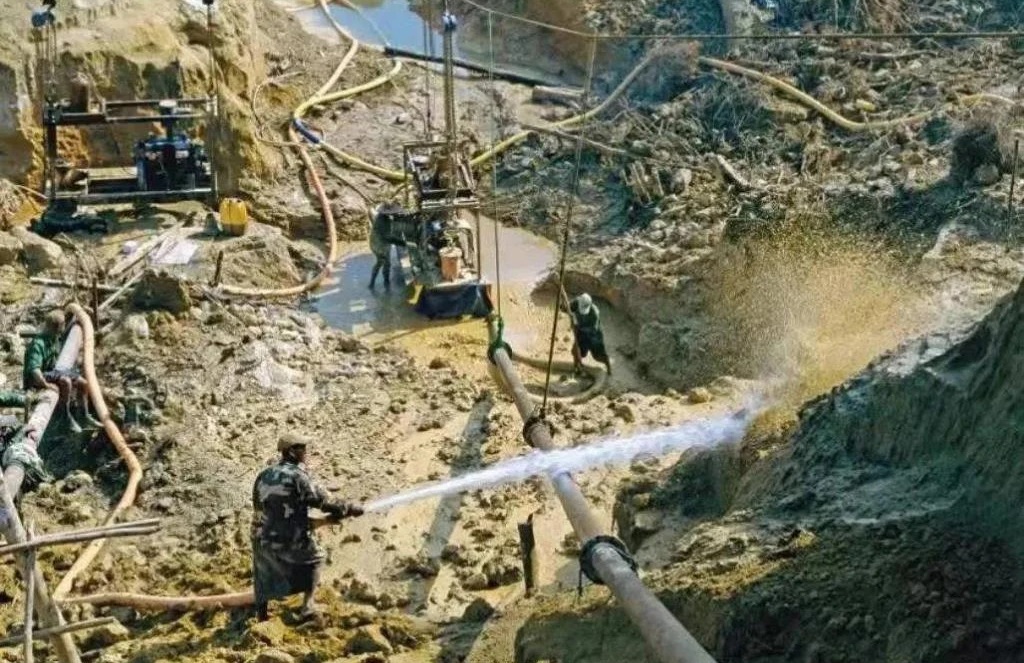
A floodwall alone won’t solve everything. The mud from Myanmar’s deforested hills will keep coming, and the floodwall could need repairs every year.
Tara Buakamsri of Greenpeace Southeast Asia says ASEAN’s cooperation on climate and environmental issues has not been enough. The Mae Sai flood is a clear example of cross-border environmental impacts. ASEAN’s agreement on pollution hasn’t worked well because it relies on voluntary action and avoids interference.
Tara wants stronger government action, both for floods in Mae Sai and pollution from mining in northern rivers. He believes long-term health and environmental safety are at risk. Tara also sees value in local cooperation. Residents on both sides of the border could work together on early warning systems to limit damage.
He suggests the Mekong River Commission could bring up concerns with China about harmful practices by some companies, to help reduce future problems.




